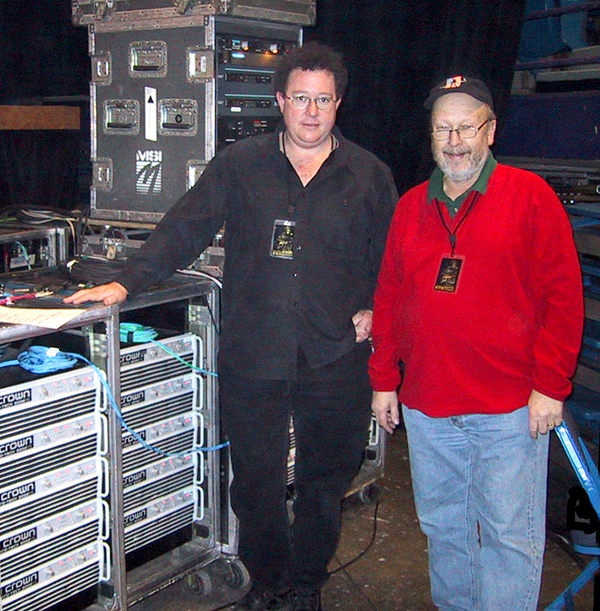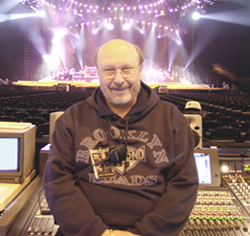If someone had taken Stan Miller aside 40 years ago and told him how much of his career he’d spend on tour with Neil Diamond, he likely wouldn’t have believed it.
“I remember driving the bus for a Johnny Cash tour and some members of the band saying they’d played with Johnny for 20 years. I thought, that’s a long time.” Now, however, after over four decades with Diamond, “it actually doesn’t seem that long.”
In all that time, Miller has never missed a gig. When he suffered a heart attack at age 37, Diamond actually postponed a planned tour, insisting on waiting for Miller’s health to improve. “I kept saying ‘yes I can tour,’ and Neil said, ‘give me your doctor’s number.’ Then he called the doctor and took him on tour with us.
“Neil instills loyalty and he is loyal,” Miller continues. “We have some musicians on the road who’ve been in 30 years. I’m 44 years in. I’ve been a very lucky guy.” Diamond is truly a rarity in the business, not only in terms of his dedication to his band and crew, but in his recognition of their value as creative professionals in their own right. “Many artists don’t allow technical people to be creative, and one of the things I’ve enjoyed with Neil was the chance to be creative and to try things.”
Not everything he tried was guaranteed to be successful, he continues, referencing a cartoon that depicts him sitting way out on the limb of a tree busily sawing himself a fast way down. “There’s been a few times I was close to falling,” he adds, laughing. Mostly though, he’s done quite the opposite.
Filling A Need
Miller’s career is marked by firsts. He was the first to fly loudspeakers for a touring rig using a system of his own creation, the first to tour with a graphic EQ with third-octave Altec passive filters, the first to use a multi-core snake, the first to pioneer a viable process for applying protective fiberglass coverings to components and road cases – and that’s just a sampling.
His later innovations in the field of digital audio are even more impressive, perhaps chief among them being the first to take a completely digital sound system out on the road shortly after the Yamaha PM1D console was first introduced.
As tempting as it is to portray Miller as the pro audio equivalent of a mad scientist, however, he maintains his accomplishments were more a matter of filling a need than hatching a grand scheme to push live sound technology forward.

When he talks about his legacy, it’s with modesty, asserting that everything he’s accomplished is an extension of being a Nebraska farm boy with an irrepressible fascination with machines.
“Necessity is the mother of invention. In those days, we had to invent things. We built our own loudspeakers. We built our own mixers. We built everything but we had to do it the cheapest way possible, and make it work.”
Take the console he built for the live sound of Hot August Night at the Greek Theatre, for example. The album is truly iconic – a defining moment in the development of Diamond’s sound and performance style.
“But we were just doing our thing,” Miller says. “At the time, consoles generally had two outputs. We had a string orchestra, and I wanted the strings to envelop Neil’s voice. I needed five outputs and ended up using eight. I played the strings through the rear channels with no delay – I wanted the natural delay.”















